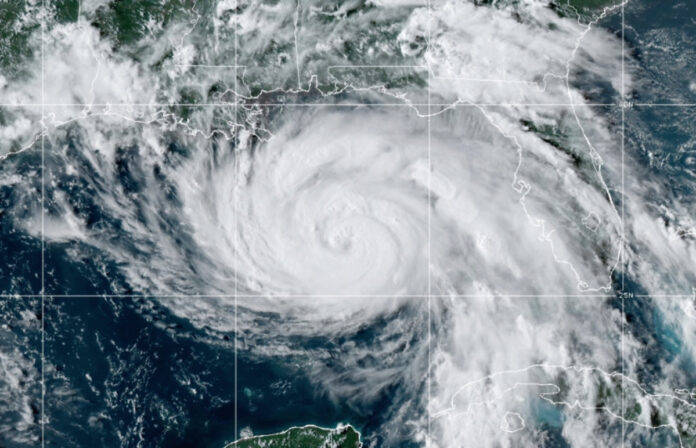While I prefer bugging in over bugging out, sometimes bugging out makes a great deal of sense. Nuclear plant melt downs are a good example. Massive chemical leaks are another. Wildfires, under many circumstances, and for coastal residents, I recommend bugging out when facing a powerful hurricane.
Hurricane Ida, which is in the Gulf of Mexico and may be a category 4 storm with winds up to 140 miles per hour when it hits New Orleans, is a perfect example. It could be another Katrina.
A Katrina Repeat
For those who don’t remember, Katrina killed 1,800 people. The storm flooded large parts of New Orleans, and left $125 billion in damage across Louisiana and into Mississippi. What I remember most about the event is endless footage of Coast Guard and National Guard choppers rescuing people from their rooftops. I had a friend from a local police department who deployed to New Orleans to help with search and rescue. He said what the TV didn’t show was the hundreds of bodies floating in the water-filled streets of New Orleans.
I also remember gasoline shortages and that it was impossible to buy MREs, long term storage food, or other survival and prepping supplies for at least six months after the hurricane. Even if you live far away, the impact of a massive storm could cause shortages. Be sure you are well stocked.
Hurricane Ida will make landfall on Sunday night, 16 years after Katrina. Several New Orleans parishes already have evacuation orders. Sixteen years ago, it was people’s refusal or inability to evacuate that lead to so many deaths. Getting out early means you won’t be swept off your roof or have to be housed in the Superdome. You can get out while the highways are open and the gas stations still have fuel.
Get out Now
If you are in New Orleans, the Louisiana Coast, or the coastal areas of Mississippi and Alabama, I hope you are reading this in the car on your way out. If you are lucky enough to live outside Hurricane Ida’s impact area, I hope this article gives you a push to plan for an possible emergency evacuation.
Evacuation Can Make Sense
In addition to residents caught by surprise when the levees broke and flooded low-lying areas, businesses were unprepared for Katrina. Nursing homes and hospitals that did not evacuate their patients are just some examples of deaths caused by Hurricane Katrina that better planning and preparedness could have prevented. They also left prisoners in their cells as guards sought shelter.
Business owners should prepare for recovery and business continuity and consider moving critical resources out of the flood zone. For example, if I owned a business that had trucks or heavy equipment, I’d want them driven out of the area or at last parked on high ground.
Have a Plan
If you need to bugout, it’s easier if you have a plan. When we lived outside a city and planned to bug out to our retreat four hours away, I had a cascading list of things to grab for an evacuation. I broke it down by how much time we had to gather our stuff and leave. It had a simple list for 10 minutes or less, more for 20 minutes, far more if we had an hour, and a final list of things to do and take if we had 24 hours or more. The latter one included renting a trailer or truck and included address and phone number for three local U-Haul dealers, Budget Truck Rental and Penske.
The 10 minutes list started with “Don’t Panic! Use the toilet, catch breath, drink plenty of water. Get dressed in comfortable shoes/boots and pack weather/seasonal appropriate outerwear. It also included our laptop computer, tablets, phones, chargers, thumb drives and any medications and prescriptions. The easiest part was grabbing pre-packed bugout bags, boxes of MREs, a case of water, and two boxes labeled “Grab and Go Food.”
I had an empty backpack on a shelf in my bedroom closet. In an emergency, I could quickly fill it with items from the bedroom gun safe (which included ammo and money) and underwear and socks from my dresser.
The one-hour list included more clothes, toiletries and toilet paper, sleeping bags and pillows, additional food, the hard drives from our desktop PC, ammo cans packed with multiple calibers of ammo, and specified which additional guns we would take.
We also had multiple routes out of town and our primary one did not use an interstate highway.
Planning to Bug In
If you plan to bug in, or stay home, that also requires a plan. For example, if you plan to stay home when there is a forest fire heading your way, you should have cleared the area around your home, have a body of water from which to draw water, a trash pump, and enough fire hose to effectively spray your home and any hot cinders that fall nearby.
If you live near a chemical plant, get a gas mask and several filters for your entire family. Know what the emergency siren means and what the all-clear sounds like. If the plant or the county has a text emergency alert program, make sure you subscribe. Simple, relatively inexpensive preps can help save your life.
We live a long way from New Orleans, but we may feel the remnants of Ida by lat Wednesday. On Friday, I filled the gas tank on my truck, and I did the same for my wife’s car Saturday. On Monday, I will turn in our empty propane tank so that we will have two full ones, just in case. Also on Tuesday, my wife will go grocery shopping. We’ll also make sure all our batteries and devices are charged and ready to go in the event of another power outage.







